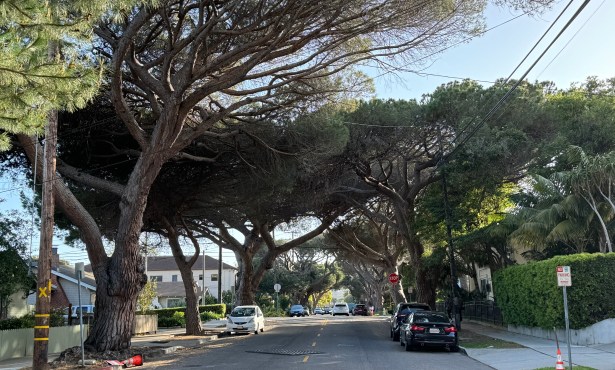To Catch a Rapist
The True Saga of an Evidence Backlog

The number of unanalyzed rape kits nationally is projected to be as high as 400,000, according to a CNN news report on May 28, 2013. They have been sitting on shelves in some cases for more than 40 years, and the statue of limitations for prosecuting rapes has passed for many of them.
The CNN reporter, Randi Kaye, interviewed Lavinia Masters, who was raped at the age of 13 in 1985 in Detroit.
It was only recently, after a Detroit police sergeant began a cold-case program, that her rape kit was tested and a DNA match was made. The perpetrator was located in jail, serving time for raping other women. Although it was too late to convict him for the attack on Masters, the evidence was used to deny him parole.
This problem doesn’t exist for only a few cities, but throughout the country. In March 2009, Human Rights Watch published a report titled Testing Justice, the Rape Kit Backlog in L.A. City and County. It was the culmination of 18 months of work by researcher Sarah Tofte, whose work brought national attention to the issue.

Rape kits are envelopes (or other collectors) that hold evidence such as clothing and bodily swabs, taken by a medical team from a victim of sexual violence during a four- to six-hour exam. Submitted to police labs where DNA samples are uploaded into the Combined DNA Index System (known as CODIS), these kits can be crucial to solving criminal cases. As a national database that collects DNA profiles from crime scenes and matches them to evidence already in the system, CODIS enables law enforcement to identify suspects.
DNA analysis is important also because it can confirm the presence of DNA from a person who may be a sexual predator, identify serial rapists, or exonerate an innocent suspect. The DNA evidence can be used to arrest and convict.
The L.A. Investigation: Tofte began interviewing various police departments in Los Angeles County in 2008. At first, police representatives either denied that a backlog existed or said they simply did not know whether it did or not. Unable to gain cooperation, Human Rights Watch pursued freedom-of-information requests and sought help from the media. Women activists lobbied their elected officials.
Tofte eventually learned that L.A. city and county (48 departments in all) had more than 12,000 untested kits, the largest existing known backlog in the country at the time. While some perpetrators may have pleaded guilty, or pleaded to lesser charges, making the additional evidence “unnecessary,” the question of justice simply remained unanswered for hundreds, if not thousands, of people who reported that they were victims of rape.
Elected officials responded to public pressure, and police departments moved to eliminate the backlog by funding more staff and paying private labs to help do the work. (During this time, city and county police departments claimed a lack of resources and sufficient technical staff to test all kits and eliminate the backlog, but Tofte documented that funds existed that were not being accessed or used appropriately.)
Advocacy and Action: Across the country, individual jurisdictions began to focus on the rape-kit issue. Texas and Illinois, and the City of San Francisco, all enacted legislation to eliminate past backlogs and prevent them from occurring in the future. The new procedures include provisions for notifying victims about their cases, and specific timelines for submitting rape-kit evidence, uploading evidence into CODIS, and analyzing it. In some cases, audits of backlogs were conducted.
The most successful program to eliminate a rape-kit backlog was enacted in New York City. In 1999, when the city’s police department decided to consolidate its storage facilities, officials learned that 16,000 kits existed containing unanalyzed evidence. Then-mayor Rudolph Giuliani and police chief Howard Safir made the commitment to go forward with laboratory analysis of all kits. Within four years time, all the kits in the backlog had been analyzed.
A special cold-case unit was established to pursue new investigations when matches were found. Two thousand hits occurred in CODIS, according to Human Rights Watch, resulting in 200 cases in New York City that were pursued by the special unit. Since 2003, New York City’s arrest rate for rape has risen from 40 percent to 70 percent.
In trying to resolve the various backlogs that exist throughout the country, the challenge has been convincing authorities to submit all rape kits for DNA analysis and provide the necessary funds to implement and monitor these programs.
There was some feeling that testing all the kits was of little value, but New York City has proven that it is very valuable. “The policy is a no-brainer given all the rapes we have been able to solve and prosecute,” a district attorney in the New York City sex crimes unit told Human Rights Watch in 2008.
Political will and leadership prevailed in New York City, but current law and police practices vary from state to state, and only a few jurisdictions require all kits to be tested.
In Los Angeles in 2008, both the City Police Department and County Sheriff issued statements that all rape kits would be sent to crime labs for testing. Three years later, L.A. mayor Antonio Villaraigosa announced that the city’s more than 6,000 rape kits in storage had been tested, and in the process, 753 hits were obtained from DNA samples. According to crime lab officials in Los Angeles, there is no current backlog in either the city or county.
Santa Barbara County: In Santa Barbara County, the issue remained unfinished business for women who had worked with Tofte on the L.A. backlog.
There were a number of issues to be resolved: Was there a backlog here? What would it cost to test all kits? Would there be enough technical staff? Would law enforcement departments commit to it? Then, political persuasion and technology provided a resolution.
In 2011, Jill Spriggs, chief of the Bureau of Forensic Services, a division of the California Department of Justice (DOJ), initiated a protocol requiring that three samples be collected from each rape kit and sent immediately to the laboratory for testing and analysis for DNA. Previously, local law enforcement had determined when a kit was submitted for testing. This three-sample protocol — called rapid DNA service, or RADS — was first implemented in the main DNA state lab in Richmond, California, the home of all CODIS information for California.
The Santa Barbara County Regional DOJ State Laboratory began the three-sample protocol in December 2012. This was the second state lab to do so following Richmond.
The new approach was initiated by two criminalists at the lab, who worked with the Santa Barbara District Attorney, the Rape Crisis Center, the Sexual Assault Response Team, and law enforcement. It was a “collaboration of our community,” said Charlene Marie, the Santa Barbara lab director. “A great win.”
Using the RADS protocol, three samples are collected by the Sexual Assault Response Team during every medical exam and mailed immediately to the lab. Then, the remaining evidence in the kit is sent to police and retained in law enforcement facilities until further use is required.
In addition, the State of California began a program using robots to analyze lab samples. The robots streamline the process by working on several cases at a time instead of one, facilitating sample- and liquid-handling. The Santa Barbara lab has four fully trained casework DNA analysts, three DNA analysts in training, and three robots with one more on order.
In Santa Barbara, existing backlogs are still in the process of being eliminated. However, thanks to RADS and the robots, part of each new kit is sent immediately to the lab for analysis — none of these new kits remain untested.
The State of California funds the costs for analysis, including some fees from court fines.
The DNA matches have resulted in new investigations and arrests. On Monday, May 20, 2013, the Santa Barbara City Police Department announced the arrest of a suspected rapist following a DNA analysis from the lab linking evidence in CODIS to the perpetrator. This was one of two hits and arrests that occurred in the last few months resulting directly from faster lab processing.
There is an interesting, but not surprising, footnote to this story. Women in positions of authority in Santa Barbara County have provided leadership in creating the improved system for dealing with rape kits: From Rape Crisis Center staff and Sexual Assault Response Team administrators to the district attorney of Santa Barbara County, the head of the state regional lab, the mayor of Santa Barbara, and a county supervisor, women have actively brought about this change. Women in Santa Barbara who are raped have a better chance of receiving justice than in many communities across the country. It is a model that could be emulated nationally.



